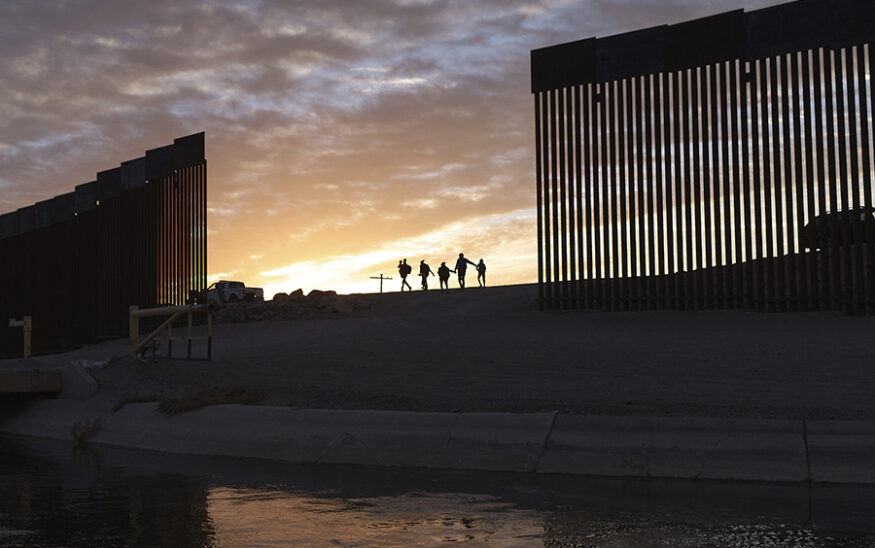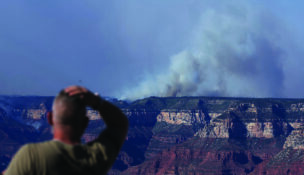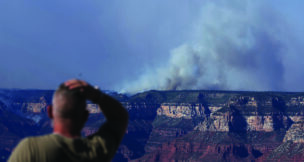Feds fund ‘smart wall’ in Southwest to strengthen border security
Ellis Preston, Arizona Capitol Times//October 26, 2025//
Feds fund ‘smart wall’ in Southwest to strengthen border security
Ellis Preston, Arizona Capitol Times//October 26, 2025//
Key Points:
-
The Department of Homeland Security is spending $4.5 billion to fund a smart wall along the Southwest border
-
The smart wall is a combination of technology, including motion sensors and barriers
-
Over $800 million in federal funding for the Arizona border sectors
The Department of Homeland Security and U.S. Customs and Border Protection announced on Oct. 10 that a “smart wall” has been officially funded along the U.S.-Mexico border in the Southwest, according to a press release from the CBP.
There were 10 different construction contracts for the smart wall awarded in late September, totaling $4.5 billion, according to DHS. Two of the contracts allocate funds to Arizona border sectors of Tucson and Yuma. The Tucson contract awards just under $607 million for the project with the Yuma contract awarding just under $200 million.
“The Smart Wall means more miles of barriers, more technology, and more capability for our agents on the ground. This is how you take control of the border,” Rodney Scott, the CBP commissioner, said in the press release.
A “smart wall” includes barriers, patrol roads, cameras and detection technology. The projected builds will consist of 230 miles of smart wall, and nearly 400 miles of new technology.
“The technology additions will further secure existing walls in areas where the Biden Administration policies canceled contracts to do so,” the press release said.
The money for the construction of the smart wall comes from the Trump administration’s One Big Beautiful Bill Act and the remaining border wall appropriations from the 2021 fiscal year.
“When we talk about a wall, we get focused on a physical barrier,” said Douglas Gilmer, a former DHS official and the current president of Resolved Strategies. “But a lot of this is really a technological wall. It’s a barrier built with technology.”
Gilmer said the smart wall is “layered security,” with multiple components working together to assist the border patrol at each sector.
“It’s those redundant systems that … provide just a greater level of security and awareness to those who are doing the monitoring,” Gilmer said.
The Yuma 1 Project will fund 60 miles of system attributes within the USBP Yuma sector. For the Tucson 1 Project, it will construct about 23 miles of new secondary border wall and about 66 miles of system attributes in USBP’s Tucson and Yuma sectors.
A portion of the Tucson 1 project will run through the Cabeza Prieta National Wildlife Refuge and the Organ Pipe Cactus National Monument. Gilmer said that because motion detectors could detect wildlife rather than human beings, cameras should also be installed to help determine the source of a detection trigger.
Despite this, Gilmer said due to advanced technology, he was not concerned.
“There is sensor technology out there that can detect the difference between one person, a group of people, an ATV, a pickup truck, a heavy truck,” Gilmer said.
Construction on a small portion of the smart wall in the Arizona border sectors has begun. For the majority, the projects still sit at the “awarded” or “planned” statuses.
In Arizona, the federal government has already built 220 miles of border wall through Yuma, Nogales and Lukeville, according to The New York Times. The Arizona-Mexico border currently runs about 370 miles.
Different types of the wall have been built along the border. So far, the current border wall is either made up of 18 feet to 30 feet tall metal bollards, bollards suspended on concrete, or mesh electrical wire for temporary purposes.
“We’ve used sensors on the border for a long time, we’ve used cameras on the border for a long time,” Gilmer said. “But again, there’s a way to defeat those things in and of themselves.”
Gilmer said that while technology similar to the smart wall has been used before, the difference is that they now have the ability to link “multiple systems into one,” making the system more difficult to surpass.
For example, Gilmer said that with new advances in technology, when a sensor gets triggered, it then triggers cameras that can use facial recognition to alert authorities and dispatch agents.
“I think all of that can be done much more quickly now with the advent of technology than we’ve been able to do in the past,” Gilmer said.













































